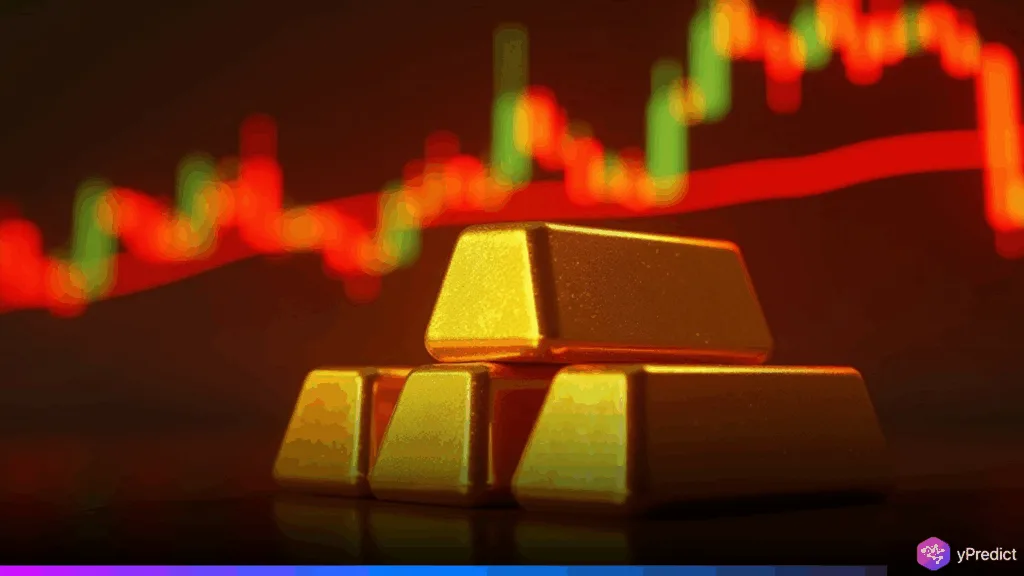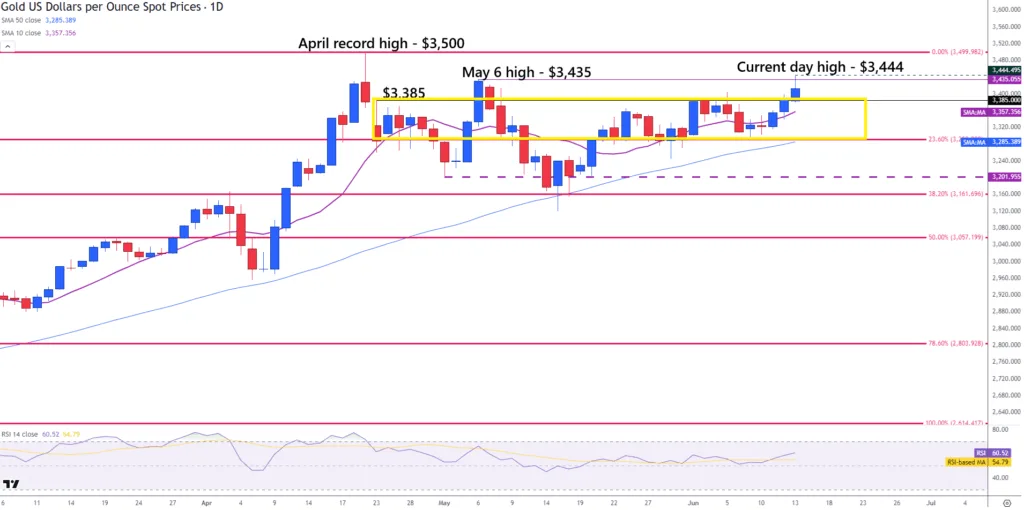
Tensions flared across the Middle East as Israel launched an airstrike on Iran’s nuclear sites, making gold prices soar sharply. The fact that gold broke the $3,400 barrier on Friday showed how appealing it is as a haven in the face of geopolitical turmoil. Israeli Prime Minister Benjamin Netanyahu confirmed the attacks. He stated that they are essential to halting Iran’s nuclear aspirations.
Thus, as markets assess possible retaliation, attention also shifts to softer U.S. inflation data, which further fuels gold’s rally. Global markets are still tense as important U.S. economic reports are due, and the sixth round of nuclear talks has been canceled.
Israel-Iran Conflict Triggers Market Shock
Reuters confirmed that Israel had hit about 100 locations throughout Iran in the early hours on Friday. 200 planes were used in the airstrike, which aimed at significant components of Iran’s nuclear enrichment program, according to reports.
Prime Minister Benjamin Netanyahu said that the attack was aimed at “striking the heart” of Iran’s nuclear program. Iran’s response was to start plans to speed up enrichment activities; the UN has already charged Iran with breaking nuclear agreements. Additionally, reports of the deaths of several senior Iranian leaders, including military commanders, heightened tensions in the area.
Why Gold Prices Soar Amid Crisis and Inflation?
Consequently, gold prices surged to $3,444, the second-highest level of the year. Previously, resistance, the $3,400 mark, now serves as a key support area. Thus, as demand for safe-haven assets rises, traders keep turning to gold for refuge.
At the same time, U.S. inflation data provided the metal with more support. Thursday’s PPI report indicated decelerating price pressures at the wholesale level, similar to Wednesday’s CPI figures that suggested reduced consumer inflation. Moreover, the Fed is keeping a close eye on the University of Michigan’s forthcoming sentiment and inflation expectations report.
By warning of a “massive conflict” in the Middle East, former US President Donald Trump fueled the fire. His warning came after reporting the U.S. had moved troops from some of the region’s hottest flashpoints, highlighting the gravity of the situation.
Will Gold Hold Strong or Face a Turn?
Technical analysis shows that there is a significant bullish bias. The RSI is at 60 and indicates an upward trend. It might open up to $3,500 if there is a break above. However, the support holds steady at $3,400 and then $3,385.

The price may drop back to $3,350 if it drops below $3,385. The price may drop further to $3,291, which is a critical Fibonacci retracement level. However, the market’s sentiment would only change significantly if it fell below $3,200.
The future course of gold will be influenced by both growing Middle East tensions and impending U.S. inflation data. Consequently, the Fed may lower interest rates if it sees sustained disinflation, which would increase the price of gold.
Bottom Line
Due to weak inflation data and geopolitical tensions, investors anticipate more volatility as gold prices rise. Gold may soon continue to shine as economic data shows that inflation is decreasing and that the Middle East is experiencing uncertainty.
Additionally, growing demand from retail investors and central banks could support the upward trend. Another factor influencing market sentiment is shifting expectations for US interest rates. Gold prices may fluctuate further in response to any unexpected changes in economic data or a sudden military buildup.







